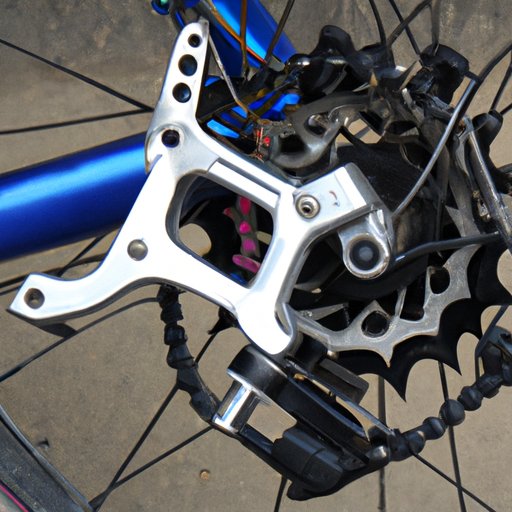Introduction
Learning how to ride a bike is a lifelong skill that can provide you with physical benefits, mental health benefits, and even financial savings. But if you’re an adult who has never learned to ride a bike, or perhaps you’ve been away from it for years, you may have some questions about where to start.
This article will provide an overview of the essential components of a bike and teach you balancing basics, braking techniques, and safety tips to help you become a confident cyclist.
Essential Components of a Bike
The first step in becoming a cyclist is to understand the various components of a bike. There are many different types of bikes available, each with its own features and advantages. Some popular types of bikes include road bikes, mountain bikes, hybrid bikes, and electric bikes.
Once you’ve chosen the type of bike that best suits your needs, the next step is to assemble it. If you purchase your bike from a store or online, it should come with instructions on how to put it together. If not, there are plenty of online tutorials or videos that can help you assemble your bike.
Balancing Basics
Now that your bike is assembled, it’s time to learn the basics of balancing. The most important thing to remember is to keep your body centered over the bike. This will help you maintain balance and control of the bike.
To get started, adjust the seat height so that you can comfortably reach the pedals without having to stretch too much. You should also make sure that the handlebars are at a comfortable distance from your body. This will help you feel more secure when riding.
Once you’re comfortable with the setup of your bike, practice balancing by pushing off with one foot and then the other. As you get better, try to coast for longer periods of time without using your feet to push off. This will help you build confidence and improve your balance.
Braking Techniques
Once you’ve mastered the basics of balancing, it’s time to learn how to stop. Most bikes have two brakes, one in the front and one in the rear. It’s important to know how to use both brakes properly to ensure that you can stop quickly and safely.
When you want to stop, apply pressure to both brakes simultaneously. If you only use one brake, you could lose control of the bike or end up skidding. Practice braking in a safe area such as a parking lot or grassy field until you feel comfortable with the technique.
Using Gears
Gears are an important part of any bike. They allow you to change the resistance of the pedals so that you can pedal faster or slower depending on the terrain. Understanding how to use gears correctly can help you become a more efficient and confident cyclist.
Most bikes have multiple gears, and shifting between them is relatively easy. To shift up, turn the gear shifters on the handlebars clockwise. To shift down, turn them counterclockwise. It’s important to practice shifting gears in a safe area before you attempt to do it while riding.
Using gears correctly can help you save energy, maintain speed, and navigate hills. It can also help to prevent injuries since you won’t be straining your legs as much.
Safety Tips
Finally, it’s important to practice safe cycling habits to ensure that you enjoy your rides without injury. Wear a helmet every time you ride, even if you’re just going for a short ride. Other protective gear such as knee and elbow pads can also help to protect you in case of a fall.
Be sure to follow all local traffic laws when you’re riding, including stopping at stop signs and red lights and yielding to pedestrians. Finally, inspect your bike before each ride to make sure that everything is in working order.
Conclusion
Riding a bike is a great way to stay active, explore your surroundings, and reduce your carbon footprint. With the right equipment and knowledge, anyone can become a confident cyclist. By understanding the essential components of a bike, learning balancing basics, mastering braking techniques, and following safety tips, you can be well on your way to becoming a safe and skilled cyclist.
If you’re interested in learning more about biking, there are plenty of resources available online. You can also find classes in your area that can help you hone your skills and become a more confident cyclist.


